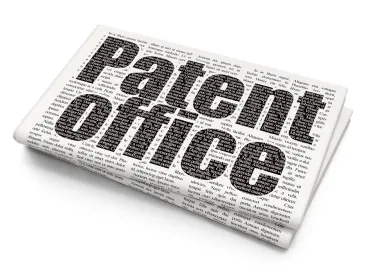In a case explaining what comprises an “applicant delay” in the context of a patent term adjustment (PTA), the US Court of Appeals for the Federal Circuit sided with the US Patent and Trademark Office (PTO) ruling that the time period it took an applicant to file a response that was in excess of the three-month deadline for responding to a final office action constituted applicant delay. Intra-Cellular Therapies, Inc. v. Iancu, Case No. 18-1849 (Fed Cir Sept. 18, 2019) (Chen, J).
As it did in the Mayo Foundation case issued two days earlier (IP Update, current issue), the Federal Circuit explained that § 154(b)(1) provides three types of statutorily defined delay caused by the PTO that will lead to accrual of PTA for the resulting patent, outlined in § 154(b)(1)(A), (B), (C). On the other hand, under § 154(b)(2)(C), when applicant conduct causes delay in the examination process, any PTA that has accumulated is reduced by that amount of applicant delay.
The applicable PTO rule, § 1.704(b), f, does not define what constitutes a proper “reply” for cutting off applicant delay but, as the Federal Circuit explained, the regulation “was promulgated against a backdrop of long-existing regulations governing patent prosecution practices. One fundamental principle that pervades these regulations is that a ‘final’ PTO action marks the end of normal prosecution as of right.”
During prosecution of Intra-Cellular’s application, the PTO issued a final action rejecting some claims and objecting to the others. On the three-month deadline for responding to the final action, Intra-Cellular filed a first response that continued to argue the merits of the final rejections and thus failed to comply with the requirements for a proper “reply” to a final action. The PTO concluded that Intra-Cellular’s first response did not prevent the accrual of applicant delay for purposes of calculating PTA for the resulting patent. Twenty-one days after filing its unsuccessful first response, Intra-Cellular filed a second response, overcoming all outstanding rejections and objections. The PTO issued a notice of allowance and concluded that the second response stopped the accrual of any further applicant delay. In calculating PTA, the PTO determined that the extra 21 days it took Intra-Cellular to file a successful response constituted applicant delay.
Not satisfied, Intra-Cellular filed a complaint in the US District Court for the Eastern District of Virginia seeking judicial review of the PTO’s PTA determination. The district court granted summary judgment in favor of the PTO, explaining that it considered the PTO’s PTA determination to involve a question of statutory interpretation performed by the agency, and therefore the determination was entitled to Chevron deference. Intra-Cellular appealed.
The Federal Circuit affirmed after examining the district court’s Chevron deference analysis.
At Step 1 of Chevron, the Federal Circuit looked at “whether the statute’s plain terms ‘directly addres[s] the precise question at issue.’” The question here was whether, under § 154(b)(2)(C)(i), an applicant’s final submission “that continues to argue the merits of the examiner’s rejection, without good cause, constitutes a ‘fail[ure] to engage in reasonable efforts to conclude prosecution’ such that applicant delay would accrue under the PTA statute.” The Court concluded that the statute did not address this question.
Turning to Step 2 of the Chevron analysis, the Federal Circuit examined “whether the Patent Office’s answer to the precise question at issue is based on a ‘permissible construction of the statute,’” explaining that “[w]e have ‘long recognized that considerable weight should be accorded to an [agency’s] construction of a statutory scheme it is entrusted to administer, and the principle of deference to administrative interpretations.’” Here, the Court rejected Intra-Cellular’s proposed interpretation of “reply” under § 1.704(b) as any bona fide attempt to address all rejections and objections in a PTO action, explaining that it incorrectly applies the standard for a compliant “reply” to a non-final action to the standard for reply to a final action.
The Court also noted that “under Intra-Cellular’s interpretation, an applicant would be allowed to continue to liberally argue and make amendments without accruing applicant delay as long as it addressed all outstanding issues in the final Office action. But treating this type of submission as a proper ‘reply’ would give the applicant the benefits of an RCE [request for continued examination] (which re-opens prosecution) without the concomitant PTA reduction that comes with an RCE.” This, said the Court, “clearly contravenes the structure of the existing PTA statute.”




 />i
/>i

